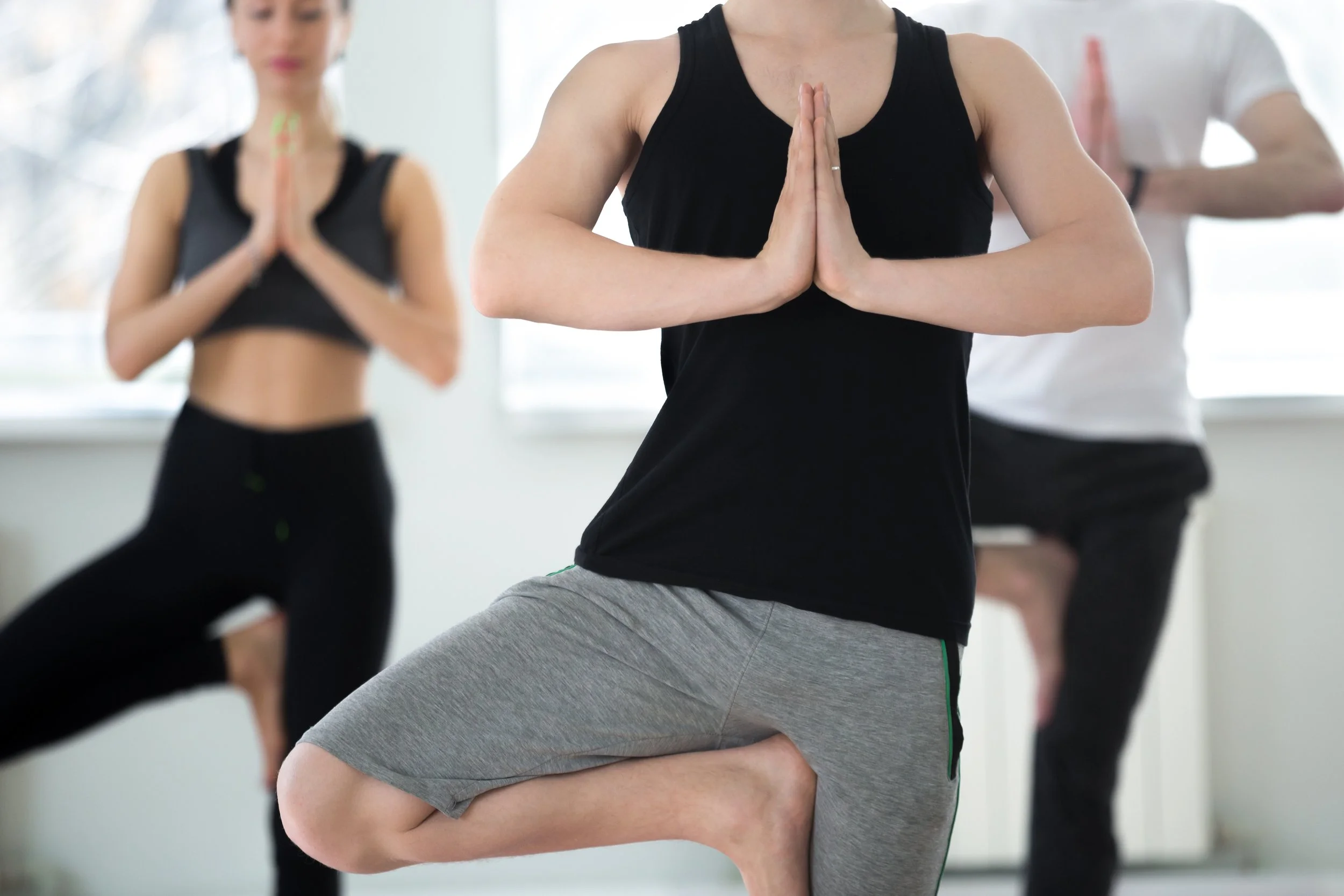Why Balance Is Important (& How To Improve Yours)
/When we think of aging healthfully, most of us look only at the big ticket items. We think about our diet/nutrition, our workout/movement routine, maybe our sleep, but there are other aspects of health that we tend to ignore that are just as (or more) important! One of those, which I’ll discuss today, is BALANCE.
Balance as a skill and capability is highly underrated and underappreciated, even though it affects everything we do. As I wrote in a recent post about why it’s important to have a strong core (which you can find here!), movement requires stability, which is synonymous with balance. In other words, balance comes from your core, and it enables you to move throughout your day with relative ease. Going up a flight of stairs, bending over to pick something up, walking, lifting weights, doing yoga, everything—it all requires balance. Unfortunately, balance is one of those “use it or lose it” skills that can decrease as we get older. However, there’s a lot we can do to mitigate that loss and keep our balance strong.
Balance is important for all ages, and all activities.
Our ability to balance keeps us from falling and stumbling while we’re doing certain movements or activities. That’s why it’s important for everyone, regardless of age. It’s one of the most fundamental skills that we develop as babies (when babies learn to walk, they’re essentially finding their balance). Balance becomes even more important as we age, because stumbling and falling when you’re, say, over 50 or 60, can lead to serious injury—think broken bones, torn muscles, etc. According to the CDC, 25 percent of adults over 65 years old in the U.S. fall every year (that’s 3 million visits to the emergency room for falls). Improved balance can decrease your likelihood of falling, and it can also improve your posture, strength, coordination, and long-term health.
So, let’s talk about how you can practice and improve your balance.
Balance Exercises For Beginners
Whenever I test one of my clients’ balance, I start with the basics. To gauge your own balance capabilities, ask yourself the following questions:
When you stand on one leg, can you balance? Do you fall over, or do you feel like you could stay in that position forever?
How well can you balance on different surfaces? Is it easier for you to balance on a hardwood floor than it is a carpet?
Can you balance on one of your feet (right or left) better than the other?
These questions will help you determine where your balance currently is, which makes it easier to track your progress over time. (Aka if it’s hard to balance on a carpet floor now, and after a few weeks of practicing, it’s easier, you’ll know your balance has improved.)
From there, you can start doing exercises that strengthen your core and lower body, which are the most crucial muscle groups for balance. For a full balance workout, head over to my Patreon—where I’ve put together a full balance routine for you! In the meantime, a few ideas for bettering your balance are…
Working with a BOSU ball
You’ve probably seen BOSU balls at the gym before—they look like someone cut a stability ball in half and attached it to a flat piece of material. The BOSU ball is a balance trainer, and it’s often used for helping people regain their balance after an injury or surgery. (It can also up the intensity of exercises like squats and planks!) The purpose of a BOSU ball is to create an unstable environment, which then activates your stability muscles. Once you are able to stand on one foot on a hard floor and carpet easily (you feel like you could forever), you can try standing on a BOSU ball and doing the same thing. Don’t worry if it feels unstable and if you struggle to find your balance, that’s the point! If it feels too difficult, you can place the BOSU ball next to a wall and hold the wall with one hand for support.
Use a balance board
Another great balance tool, if you’re a bit more advanced, is a balance board. They’re very popular amongst surfers and snowboarders, and they provide an easy way to practice your balance at home. Move onto this only after you master the BOSU ball.
Try out some standing yoga poses
Balance is one of the key principles of yoga, and nearly every standing pose you can do—from Mountain Pose to Half Moon, Warrior I, and Warrior II—will challenge your core, which overtime can advance your balance. Other poses to try are Tree Pose and Standing Splits. (You can find tutorials for all of these on YouTube!)
No matter how old you are and/or what your fitness level is, it’s important to devote time to mastering your balance. Like I mentioned earlier, I have posted a full balance routine on my Patreon page, so if you are interested in checking that out, I encourage you to join the Pure Joy Squad!
Xo,
Renata

